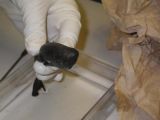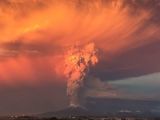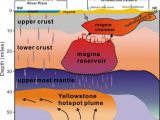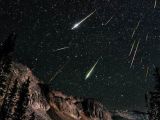It’s Sunday once more, so as per usual, it’s time to take a break from resting and mentally preparing for another workweek, and review the best and the most important science news of the past few days.
Like pretty much all the other weeks before, this last one that is now ending was quite entertaining as far as scientific discoveries go. Not to keep you in suspense any longer, here’s what’s been up since our last encounter.
10. Apostle Paul said to have converted after having witnessed a meteor
A researcher by the name of William Hartmann believes that Paul the Apostle converted and became one of the most important figures of Christianity not because he actually had a vision of Jesus, but because he saw a meteor and mistook it for a sign from the divine.
The specialist says that an exploding meteor similar to the one that hit Russia’s Chelyabinsk region in February 2013 would explain not just the bright light that the Bible says Paul saw while journeying to Damascus, Syria, but also the thundering voice accompanying the vision.
What’s more, William Hartmann argues that radiation originating from an exploding meteor would also explain why it was that, after his supposed vision of Jesus, Paul the Apostle went blind and only recovered his sight three days later.
9. Cancer tumor dissolved by drug cocktail
In a series of experiments, scientists administered several volunteers diagnosed with melanoma, which is an aggressive form of skin cancer, a combination of two drugs designed to boost their immune responses and help their body fight the disease.
Of these patients, a 49-year-old woman responded surprisingly well to the treatment. Thus, the medical experts who monitored her say that, having been administered the two drugs, the woman witnessed a tumor on her chest vanish in just three weeks.
As encouraging and quite miraculous as this outcome might be, specialists are not yet ready to recommend the drug combo as a bulletproof cure for melanoma. This is because the other volunteers involved in this study experienced severe side effects.
8. Odd-looking creature identified as a pocket shark
A report released to the public earlier this week identifies an odd-looking creature caught in the waters off the coast of Louisiana, US, in 2010 and ever since kept in storage at a research center as a pocket shark.
The creature, a photo of which is included in the gallery below, measures merely 5.5 inches (14 centimeters) in length. According to the team of wildlife researchers who identified it, the fish was only a few days old when it was pulled from the ocean.
Although it is true that they are much smaller than great whites and other fierce predators of this kind, pocket sharks don’t owe their name to their less-than-impressive size. Instead, their moniker is due to a pocket-like orifice located behind their pectoral fin.
7. Asthma could be cured in just 5 years’ time
Having reached a better understanding of what happens inside the body during an asthma attack and what causes such episodes, specialists expect that they could find a cure for this medical condition in about five years, possibly even sooner.
Apparently, asthma attacks are caused by a protein dubbed calcium sensing receptor that, when activated by various allergens and environmental pollutants, triggers inflammation in the airways and leads to symptoms such as chest tightness and shortness of breath.
Interestingly, medical experts say that drugs currently used to treat osteoporosis appear to also be effective against the protein that causes asthma. Hence, efforts are now underway to see whether these drugs could be repurposed.
6. Chile’s Calbuco volcano erupted out of the blue
This week, on April 22, Chile’s Calbuco volcano erupted and sent a massive column of ash and dust soaring into the sky. The eruption began at about 6 p.m. local time and, oddly enough, wasn’t preceded by tremors or anything of the sort.
Researchers say that a massive eruption involving this volcano in Chile was last documented back in 1961. During this event, the volcano birthed an ash and dust column measuring an impressive 12 to 15 kilometers (7.5 to 9 miles) in height, and lava flows were also observed.
In the aftermath of the eruption that shook Chile this past Wednesday, authorities decided to evacuate people living within a 20-kilometer (12.5-mile) radius of the Calbuco volcano. As a precaution, other families living nearby were also asked to leave their home.
5. Brain tumors found to literally feed on people’s thoughts
A team of scientists claim to have found evidence that a certain type of brain tumors, i.e. high-grade gliomas, grow by literally feeding on people’s thoughts. The more active the brain that houses them, the bigger the tumors become.
The exact mechanisms that allow such brain tumors to grow by feeding on thoughts remain unclear. Still, researchers say that the tumors appear to highjack the chemical pathways that the brain relies on to send signals between neurons and use them to their advantage.
The specialists behind this study hope that, now that they know that high-grade gliomas grow with the help of the very thoughts of the person carrying them in their brain, they might be able to develop better drugs and treatments against them.
4. Previously unknown magma reservoir discovered under Yellowstone
It just so happens that the hidden anatomy of the Yellowstone Caldera, a supervolcano in the Yellowstone National Park in the US, is more complex than previously assumed. Or so argue a group of researchers in a new study.
The paper in question, published in the journal Science, announces the discovery of a previously undocumented magma reservoir under the Yellowstone Caldera, spanning at depths of 12 to 28 miles (roughly 20 to 45 kilometers).
When compared to the magma chamber resting on top of it, this newly discovered reservoir of partly molten rock is about 4.4 times bigger. Thus, specialists estimate that it holds enough volcanic material to fill the Grand Canyon 11 times over.
3. Lab-made human embryos had their genetic makeup altered
A team of scientists in China claim to have modified the genetic makeup of several human embryos obtained from fertility clinics, editing a faulty gene associated with a potentially fatal blood disorder and inserting healthy genetic information in its place.
The experiments, hailed as a world first, are argued to pave the way for the possibility of addressing various diseases by eliminating the genetic faults that cause them. Besides, there is now intense talk about scientists using genetic engineering to make so-called designer babies.
Still, the fact of the matter is that, although impressive, this research project carried out in China wasn’t exactly successful. Thus, of the 86 human embryos that were experimented on, just 7 had their DNA altered as planned.
2. A meteor shower peaked on Wednesday, April 22
This past Wednesday, Earth moved through debris left behind by Comet C/1861 G1 and the annual Lyrid meteor shower happened. In the northern hemisphere, the shower peaked between 10:30 p.m. on April 22 and sunrise on April 23. In the southern hemisphere, it began around midnight.
As explained by astronomers, meteor showers occur when debris aimlessly floating about in space enters our planet’s atmosphere and ignites. The more debris passes through Earth’s atmosphere and catches fire, the more meteors light up the sky.
Interestingly, it looks like the annual Lyrid meteor shower has been happening here on Earth since about 2,600 years ago. Usually, the shower births about 10 to 20 meteors per hour. Every once in a while, however, the count reaches nearly 100.
1. NASA’s Hubble Space Telescope celebrated its 25th anniversary
On April 24, 1990, the Hubble Space Telescope was launched atop NASA’s Space Shuttle Discovery and successfully positioned itself in Earth’s orbit. The telescope has been circling our planet ever since, snapping images of global landscapes and deep space.
This week, on Friday, the Hubble Space Telescope celebrated its 25th anniversary. To mark the event, NASA’s released a stunning image showing a star cluster by the name of Westerlund 2 and that was not too long ago produced by Hubble. You can find the image in the gallery below.
In case anyone was wondering, the Hubble Space Telescope measures 43.5 feet (13.3 meters) in length, which makes it about the size of an average bus. It is positioned at an altitude of 350 miles (560 kilometers) and needs just 95 minutes to circle our planet.
This news about the 25th anniversary of the day the Hubble Space Telescope was launched concludes our latest round-up of the best and the most important news from the world of science. To stay on top of things, be sure to check this page again next Sunday.

 14 DAY TRIAL //
14 DAY TRIAL // 










